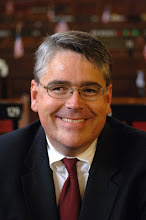Pope's Encyclical on Global Economy Supports the Principles of the Employee Free Choice Act
Unions important “today even more than in the past,” says Holy Father
Washington, DC – Catholics for Working Families (www.catholicsforworkingfamiles.org), a coalition of Catholic organizations formed to help pass the pro-union Employee Free Choice Act, today welcomed Pope Benedict XVI's new encyclical Caritas in Veritate. The document contains a bold critique of unregulated free market capitalism and reiterates unequivocally the Catholic Church’s longstanding support for labor unions and the central role they play in ensuring workers' rights and just economic development.
The Employee Free Choice Act will remove legal barriers to union organizing and negotiations by setting up a simpler and more democratic process by which workers may choose to form unions, requiring mediation in cases of first contract disputes, and imposing stricter penalties on employers who violate existing workers' right protections. The legislation and Caritas in Veritate share a common recognition that workers have an inviolable right to organize, and that employers ought to treat their workers with dignity and respect.
“The rise of globalization has coincided with a widening gap between wealth and poverty, and a steady decline in U.S. union membership. Pope Benedict's new encyclical reminds us that these sea-changes in the global economic order are not unrelated,” said Dr. Joseph Fahey, professor of religious studies at Manhattan College and chair of Catholic Scholars for Worker Justice. “In light of the pope’s reaffirmation of the importance of labor unions, we ask our fellow Catholics, especially those in the business community, to join us now in calling for the passage of the Employee Free Choice Act.”
According to Pope Benedict:
“The repeated calls issued within the Church's social doctrine, beginning with Rerum Novarum[60], for the promotion of workers' associations that can defend their rights must therefore be honoured today even more than in the past, as a prompt and far-sighted response to the urgent need for new forms of cooperation at the international level, as well as the local level.”
Each year, thousands of U.S. workers are subjected to illegal harassment and intimidation by employers who exploit lax penalties and other deficiencies in existing labor laws in order to prevent their employees from organizing. Countless more union members are trapped in bitter and unproductive contract disputes by employers who refuse to bargain in good faith. The Employee Free Choice Act will help remedy these abuses by preventing what Pope Benedict terms efforts to “limit the freedom or the negotiating capacity of labour unions.”
“I have seen firsthand the lengths to which some employers will go to prevent workers from exercising their legal and moral right to form a union – threatening, intimidating, and even firing workers who attempt to organize,” said Chris Korzen, a former health care union organizer and now executive director of Catholics United. “Passing the Employee Free Choice Act is the best way to protect workers from violations like these and to answer the pope's call for increased support of organized labor.”
Pope Benedict also called on unions to “turn their attention to those outside their membership” and become more active participants in the broader struggle for justice. Many unions in the U.S. have already embraced this role, notably those who are currently investing heavily in the upcoming legislative push for universal healthcare. The Catholic Church regards health care as a basic human right.
Several Catholic senators have not yet taken a position on the Employee Free Choice Act, including Mary Landrieu (D-La.), Susan Collins (R-Maine), and Lisa Murkowski (R-Alaska). The U.S. Senate is expected to vote on the legislation before the August recess.
For more information:
Caritas in Veritate: http://www.vatican.va/holy_father/benedict_xvi/encyclicals/documents/hf_ben-xvi_enc_20090629_caritas-in-veritate_en.html.
The Employee Free Choice Act: http://www.americanrightsatwork.org/employee-free-choice-act.
Catholics for Working Families: www.catholicsforworkingfamilies.org.
About Catholics for Working Families:
Catholics for Working Families is a project of Catholics United, with support from Catholic Scholars for Worker Justice, Catholics in Alliance for the Common Good, and Pax Christi USA.

